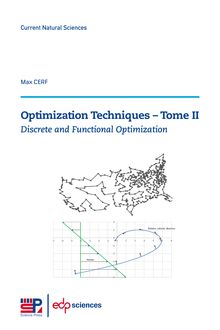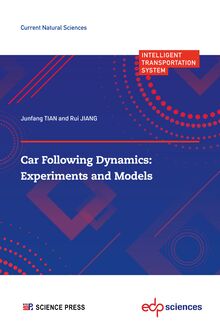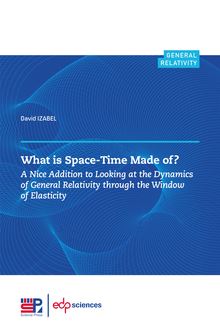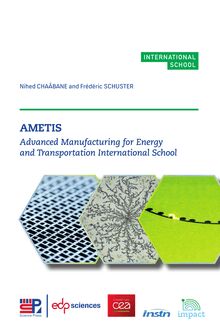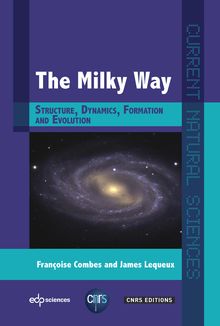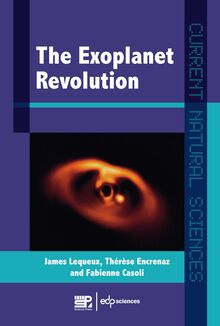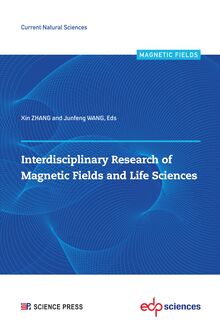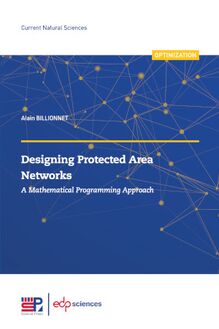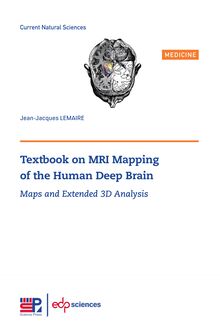-
 Univers
Univers
-
 Ebooks
Ebooks
-
 Livres audio
Livres audio
-
 Presse
Presse
-
 Podcasts
Podcasts
-
 BD
BD
-
 Documents
Documents
-
- Cours
- Révisions
- Ressources pédagogiques
- Sciences de l’éducation
- Manuels scolaires
- Langues
- Travaux de classe
- Annales de BEP
- Etudes supérieures
- Maternelle et primaire
- Fiches de lecture
- Orientation scolaire
- Méthodologie
- Corrigés de devoir
- Annales d’examens et concours
- Annales du bac
- Annales du brevet
- Rapports de stage
La lecture à portée de main
Découvre YouScribe en t'inscrivant gratuitement
Je m'inscrisSpace Fault Tree Theory and System Reliability Analysis , livre ebook
Découvre YouScribe en t'inscrivant gratuitement
Je m'inscrisEn savoir plus
En savoir plus

Description
The significance of the existence of the system is to realize its function and maintain its stability, that is, the reliability and stability of the reliability. Reliability is affected by factors, component properties and system structure, and its changes are complex. In order to solve this problem, the authors proposed the space fault tree theory in 2012. This book is the first time that the fundamental part of the theory has been presented internationally.
Content Summary
Introduction
CHAPTER 1
Introduction
1.1 Purpose and Significance
1.2 Summary of Research and Problems
1.2.1 Fault Tree Research
1.2.2 Multi-factor Influence and Fault Big Data
1.2.3 System Function Structure Analysis and Factor Space
1.2.4 System Reliability and Influencing Factors
1.2.5 Cloud Model and Similarity
1.2.6 Object Classification and Similarity
1.3 Deficiency of System Reliability
References
CHAPTER 2
Continuous Space Fault Tree
2.1 Concepts of CSFT
2.2 Fault Probability Distribution
2.2.1 Component Fault Probability Distribution
2.2.2 System Fault Probability Distribution
2.3 Importance Distributions
2.3.1 Probability Importance Distribution
2.3.2 Criticality Importance Distribution
2.4 System Fault Probability Distribution Trend
2.5 Calculation of MTLa
2.6 Conclusions
References
CHAPTER 3
Discrete Space Fault Tree
3.1 Discrete Space Fault Tree
3.2 Significance of DSFT Modified Using Fuzzy Structured Element
3.3 Factor Projection Fitting Method
3.4 Constructions and Applications of EDSFT
3.4.1 E-Characteristic Function
3.4.2 E-Component Fault Probability Distribution
3.4.3 E-System Fault Probability Distribution
3.4.4 E-Probability Importance Distribution
3.4.5 E-Criticality Importance Distribution
3.4.6 E-System Fault Probability Distribution Trend
3.4.7 E-Component Domain Importance
3.4.8 E-Factor Importance Distribution
3.4.9 E-Factor Joint Importance Distribution
3.5 Conclusions
References
CHAPTER 4
Inward Analysis of System Factor Structure
4.1 Inward Analysis of System Factor Structure
4.2 Human–Machine Cognition
4.3 Table Method
4.4 Classification Reasoning Method
4.5 Mathematical Description of Classification Reasoning Method
4.6 Item-By-Item Analyses
4.7 Mathematical Description of Item-by-Item Analyses
4.8 Conclusions
References
CHAPTER 5
Function Structure Analysis and Factor Space
5.1 Factor Analysis Method of Function Structure
5.1.1 Factors and Dimension Variability
5.1.2 Function Structure Analysis Space
5.2 Factor Logic Description of Function Structure
5.2.1 Axiom System of Function Structure Analysis
5.2.2 Minimization Method of System Function Structure
5.3 Analysis of System Function Structure
5.3.1 Analysis with Incomplete Information
5.3.2 Analysis with Complete Information
5.4 Conclusions
References
CHAPTER 6
System Reliability with Influencing Factors
6.1 Methodology of Concepts and Definitions
6.2 Analysis of Relationship between Reliability and Influencing Factors
6.2.1 Random Variable Decomposition Formula
6.2.2 Causal Relationship Reasoning
6.2.3 Causal Concept Extraction
6.2.4 Background Relationship Analysis
6.2.5 Factor Dimension Reduction
6.2.6 Compression of Fault Probability Distribution
6.3 Algorithm Application
6.3.1 Random Variable Decomposition Formula
6.3.2 Causal Relationship Reasoning
6.3.3 Causal Concept Extraction
6.3.4 Background Relationship Analysis
6.3.5 Factor Dimension Reduction
6.3.6 Compression of Fault Probability Distribution
6.4 Conclusions
References
CHAPTER 7
Cloudization Space Fault Tree
7.1 Definitions of SFT
7.2 Construction of Cloudization Space Fault Tree
7.2.1 Basis of CLSFT
7.2.2 Cloudization Fault Probability Distribution
7.2.3 Cloudization Fault Probability Distribution Trend
7.2.4 Cloudization Importance Distribution Probability and Criticality
7.2.5 Cloudization Factor Importance and Joint Importance Distribution
7.2.6 Cloudization Component Domain Importance
7.2.7 Cloudization Path Set Domain and Cut Set Domain
7.2.8 Uncertainty Analysis of Reliability Data
7.3 Example Analysis
7.3.1 Cloudization Fault Probability Distribution
7.3.2 Cloudization Fault Probability Distribution Trend
7.3.3 Cloudization Importance Distribution Probability and Criticality
7.3.4 Cloudization Importance Distribution of Factor and Factor Joint
7.3.5 Cloudization Component Domain Importance
7.3.6 Cloudization Path Set Domain and Cut Set Domain
7.3.7 Uncertainty Analysis of Reliability Data
References
CHAPTER 8
Cloud Similarity
8.1 Similarity Algorithms of Cloud Model
8.2 Cloud Similarity Computation Based on Envelope
8.3 Algorithm Application
8.4 Analyses of Algorithm Advantage
8.5 Conclusions
References
CHAPTER 9
Clustering Analysis and Similarity
9.1 Preliminary Knowledge
9.2 Concepts and Properties of Attribute Circle
9.3 Object Clustering Analysis Method
9.4 Improvements of Clustering Analysis
9.5 Example Analyses
9.6 Conclusions
References
CHAPTER 10
Development and Future Prospects
10.1 Summary of Space Fault Tree
10.2 Future Development of Space Fault Tree
Sujets
Informations
| Publié par | EDP Sciences |
| Date de parution | 10 décembre 2020 |
| Nombre de lectures | 0 |
| EAN13 | 9782759825042 |
| Langue | English |
| Poids de l'ouvrage | 8 Mo |
Informations légales : prix de location à la page 0,9750€. Cette information est donnée uniquement à titre indicatif conformément à la législation en vigueur.
Extrait
T. Cui and S. Li
Space Fault Tree Theory and System Reliability Analysis
Current Natural Sciences Current Natural Sciences
ANALYSIS ANALYSISSpace Fault Tree Theory and
System Reliability Analysis
Tiejun CUI and Shasha LI
The significance of the existence of the system is to realize
its function and maintain its stability, that is, the reliability
and stability of the reliability. Reliability is affected by factors,
component properties and system structure, and its changes
are complex. In order to solve this problem, the authors proposed
the space fault tree theory in 2012. This book is the first time Tiejun CUI and Shasha LI
that the fundamental part of the theory has been presented
internationally. The authors of the book are Pro. Tiejun Cui and
Dr. Shasha Li.
Tiejun Cui was born in Shenyang, Liaoning, China in 1983. He
received a Ph.D. degree in safety technology and engineering Space Fault Tree Theory and
from Liaoning Technical University, China in 2015, and received
two postdoctoral degrees. His research interests include safety
system engineering, system reliability and system fault evolution System Reliability Analysis
processes. He is the author of several books and author and
co-author of several publications in international journals,
including papers that are indexed by SCI and EI.
Shasha Li was born in Panjin, Liaoning, China, in 1988. She
received a Ph.D. degree in safety management engineering
from Liaoning Technical University, China in 2018. Her research
interests include safety management engineering and system
reliability. She is the author and co-author of several publications
in International journals and Chinese journals and books,
including papers that are indexed by SCI and EI.
ISBN : 978-2-7598-2499-1
www.edpsciences.org
Price: 80 €T. Cui and S. Li
Space Fault Tree Theory and System Reliability Analysis
Current Natural Sciences Current Natural Sciences
ANALYSIS ANALYSISSpace Fault Tree Theory and
System Reliability Analysis
Tiejun CUI and Shasha LI
The significance of the existence of the system is to realize
its function and maintain its stability, that is, the reliability
and stability of the reliability. Reliability is affected by factors,
component properties and system structure, and its changes
are complex. In order to solve this problem, the authors proposed
the space fault tree theory in 2012. This book is the first time Tiejun CUI and Shasha LI
that the fundamental part of the theory has been presented
internationally. The authors of the book are Pro. Tiejun Cui and
Dr. Shasha Li.
Tiejun Cui was born in Shenyang, Liaoning, China in 1983. He
received a Ph.D. degree in safety technology and engineering Space Fault Tree Theory and
from Liaoning Technical University, China in 2015, and received
two postdoctoral degrees. His research interests include safety
system engineering, system reliability and system fault evolution System Reliability Analysis
processes. He is the author of several books and author and
co-author of several publications in international journals,
including papers that are indexed by SCI and EI.
Shasha Li was born in Panjin, Liaoning, China, in 1988. She
received a Ph.D. degree in safety management engineering
from Liaoning Technical University, China in 2018. Her research
interests include safety management engineering and system
reliability. She is the author and co-author of several publications
in International journals and Chinese journals and books,
including papers that are indexed by SCI and EI.
ISBN : 978-2-7598-2499-1
www.edpsciences.orgCurrent Natural Sciences
Tiejun CUI and Shasha LI
Space Fault Tree Theory
and System Reliability
AnalysisThe publication of this book was financially supported by the: National Fund for
Academic Publication in Science and Technology (2019-G-002); Natural
Science Foundation of China (51704141); National key research and development
program (2017YFC1503102).
Printed in France
EDP Sciences – ISBN(print): 978-2-7598-2499-1 – ISBN(ebook): 978-2-7598-2504-2
DOI: 10.1051/978-2-7598-2499-1
All rights relative to translation, adaptation and reproductionbyany means whatsoever
arereserved,worldwide.Inaccordancewiththetermsofparagraphs2and3ofArticle41
of the French Act dated March 11, 1957, “copies or reproductions reserved strictly for
private use and not intended for collective use” and, on the other hand, analyses and
short quotations for example or illustrative purposes, are allowed. Otherwise, “any
representation or reproduction – whether in full or in part – without the consent of the
author or of his successors or assigns, is unlawful” (Article 40, paragraph 1). Any
representation or reproduction, by any means whatsoever, will therefore be deemed an
infringement of copyright punishable under Articles 425 and following of the French
Penal Code.
The printed edition is not for sale in mainland China. Customers in mainland China
please order the print book from Science Press. ISBN of the China edition: Science Press
978-7-03-066034-3
Science Press, EDP Sciences, 2020Content Summary
Thisbookdiscussesthetheoryofthespacefaulttreeframework,whichisintroduced
internationally in system reliability analysis for the first time. Through the
integration of the factor space theory and the theory and method of intelligence, space
fault tree can be used in intelligent analysis and big data processing. This book
focuses on continuous space fault tree, discrete space fault tree, inward analysis of
system factor structure, function structure analysis, system reliability with respect
to influencing factors, cloudization space fault tree, cloud similarity, and clustering
analysis and similarity.
The book is partly a summary on space fault tree theory, the existing research
results of which are abundant. The definitions, methods, procedures, and simple
applications of the related concepts are presented. This book is suitable for
researchers who are studying and applying the theory of intelligent science and
safetysystemengineeringtoaddresssystemreliabilityissues.Itcanalsobeusedasa
reference by graduate students in fields related to safety engineering.Introduction
Space fault tree (SFT) theory is a system reliability analysis method proposed by
the present authors in 2012. After five years of development, the basic framework
of the SFT is complete; the framework includes continuous space fault tree, discrete
space fault tree, and the corresponding data mining methods. The SFT can be
satisfactorily employed for the reliability analysis of a simple system. It integrates
intelligent science with big data processing technologies, including factor space
theory, fuzzy structured element theory, and cloud model theory. Further, the SFT
with an intelligent processing capability is formed; the SFT involves the processing
of fault big data, reliability causality, reliability stability, reliability inward
engineering, and reliability change process description. The SFT has good versatility,
extensibility, and adaptability. Although there are some limitations, the SFT also
has adequate room for further development to overcometions.
This book describes the SFT theory system. The basic framework of the SFT is
introduced, including the continuous space fault tree and the discrete space fault
tree. Considering the fuzziness, randomness, and discreteness of the fault data, the
factor space theory, fuzzy structured element theory, and cloud model theory are
usedtoimprovetheSFT.Itcanapplymulti-factoranalysis,faultlogicanalysis,and
fault big data processing. The main contents of this book include the following:
Chapter 1 introduces the status of the fundamental research related to this
subject, the focal work conducted, and the innovations achieved.
Chapter 2 proposes the continuous space fault tree (CSFT), which is the most
basictheoryinthisarea.Itmainlydealswithfaultdatawithastrongregularityina
laboratory environment. Its characteristic functionality and fault probability
distribution are continuous.
Chapter 3 proposes the discrete space fault tree (DSFT), which is developed
based on CSFT. It deals mainly with irregular fault data. To this end, the fuzzy
structured element theory is introduced into the discrete space fault tree to
represent the fuzziness of the fault data, and the fuzzy structured element
characterisation function is then constructed.
Chapter 4 introduces the framework of the inward analysis of the system factor
structure (IASFS); furthermore, it defines and describes item-by-item analyses
(IIA) and the classification reasoning method (CRM). IIA and the CRM can obtain
DOI: 10.1051/978-2-7598-2499-1.c901
© Science Press, EDP Sciences, 2020VI Introduction
an equivalent response structure, which is the same as the response of the analysed
system, with respect to changes in the working environmental factors.
Chapter 5 presents the system function structure analysis theory based on the
factor space theory. The relationship between the classification reasoning method
and function structure analysis is discussed. The system function structures of both
incomplete and complete information are analysed using these methods.
Chapter 6 elucidates the logical relationship between reliability and influencing
factors;inaddition,itpresentsacorrespondinganalysismethodtoimprovetheSFT
theory, including the inference of causal relationships, reduction of the factor
dimensions, and compression of the fault data.
Chapter7describestheuseofthecloudmodel(CM)totransformacharacteristic
function into a cloudization characteristic function (CCF), allowing the SFT to
express the uncertainty in data. Thus, the expressions of the fault data
characteristics and rules are more accurate and reflect the discreteness, randomness, and
fuzziness of the fault data.
Chapter 8 proposes a new semantic simplification method based on the cloud
model. Multiple cloud models are built on envelopes and the method integrates the
area between them.
-
 Univers
Univers
-
 Ebooks
Ebooks
-
 Livres audio
Livres audio
-
 Presse
Presse
-
 Podcasts
Podcasts
-
 BD
BD
-
 Documents
Documents
-
Jeunesse
-
Littérature
-
Ressources professionnelles
-
Santé et bien-être
-
Savoirs
-
Education
-
Loisirs et hobbies
-
Art, musique et cinéma
-
Actualité et débat de société
-
Jeunesse
-
Littérature
-
Ressources professionnelles
-
Santé et bien-être
-
Savoirs
-
Education
-
Loisirs et hobbies
-
Art, musique et cinéma
-
Actualité et débat de société
-
Actualités
-
Lifestyle
-
Presse jeunesse
-
Presse professionnelle
-
Pratique
-
Presse sportive
-
Presse internationale
-
Culture & Médias
-
Action et Aventures
-
Science-fiction et Fantasy
-
Société
-
Jeunesse
-
Littérature
-
Ressources professionnelles
-
Santé et bien-être
-
Savoirs
-
Education
-
Loisirs et hobbies
-
Art, musique et cinéma
-
Actualité et débat de société
- Cours
- Révisions
- Ressources pédagogiques
- Sciences de l’éducation
- Manuels scolaires
- Langues
- Travaux de classe
- Annales de BEP
- Etudes supérieures
- Maternelle et primaire
- Fiches de lecture
- Orientation scolaire
- Méthodologie
- Corrigés de devoir
- Annales d’examens et concours
- Annales du bac
- Annales du brevet
- Rapports de stage
